- Home
- About Us
- TSPT Academy
- Online Courses
-
Resources
- Newsletter
- Business Minded Sports Physio Podcast
- Day in the Life of a Sports PT
- Residency Corner
-
Special Tests
>
-
Cervical Spine
>
- Alar Ligament Test
- Bakody's Sign
- Cervical Distraction Test
- Cervical Rotation Lateral Flexion Test
- Craniocervical Flexion Test (CCFT)
- Deep Neck Flexor Endurance Test
- Posterior-Anterior Segmental Mobility
- Segmental Mobility
- Sharp-Purser Test
- Spurling's Maneuver
- Transverse Ligament Test
- ULNT - Median
- ULNT - Radial
- ULNT - Ulnar
- Vertebral Artery Test
- Thoracic Spine >
-
Lumbar Spine/Sacroiliac Joint
>
- Active Sit-Up Test
- Alternate Gillet Test
- Crossed Straight Leg Raise Test
- Extensor Endurance Test
- FABER Test
- Fortin's Sign
- Gaenslen Test
- Gillet Test
- Gower's Sign
- Lumbar Quadrant Test
- POSH Test
- Posteroanterior Mobility
- Prone Knee Bend Test
- Prone Instability Test
- Resisted Abduction Test
- Sacral Clearing Test
- Seated Forward Flexion Test
- SIJ Compression/Distraction Test
- Slump Test
- Sphinx Test
- Spine Rotators & Multifidus Test
- Squish Test
- Standing Forward Flexion Test
- Straight Leg Raise Test
- Supine to Long Sit Test
-
Shoulder
>
- Active Compression Test
- Anterior Apprehension
- Biceps Load Test II
- Drop Arm Sign
- External Rotation Lag Sign
- Hawkins-Kennedy Impingement Sign
- Horizontal Adduction Test
- Internal Rotation Lag Sign
- Jobe Test
- Ludington's Test
- Neer Test
- Painful Arc Sign
- Pronated Load Test
- Resisted Supination External Rotation Test
- Speed's Test
- Posterior Apprehension
- Sulcus Sign
- Thoracic Outlet Tests >
- Yergason's Test
- Elbow >
- Wrist/Hand >
- Hip >
- Knee >
- Foot/Ankle >
-
Cervical Spine
>
- I want Financial Freedom
- I want Professional Growth
- I want Clinical Mastery
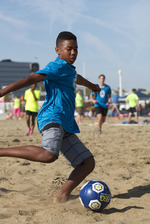 At the Harris Health system we only see a small percentage of pediatric cases so our clinical experiences are limited in this area. To compensate for the lack of clinical hours, our residency director, Dana Tew, PT, DPT, FAAOMPT organized a lecture with a local pediatric orthopedic expert. In this post, I want to summarize a few key points regarding pediatric- especially sport related- injuries and management. 1. If a child presents to your clinic with pain near the bone, you should almost always order an X-ray. Since muscles attach at or near the apophysis (growth plate) it is easy to see how repetitive stresses to the muscle can create undue forces across growth plate. Combined with rapid growth, adolescents are at risk for apophysitis. Apophysitis commonly occurs at the knee (Osgood Schlatter Disease), heel (Sever Disease) and medial elbow (little league elbow). Since the apophysis is skeletally immature, this area is a common site for avulsion fractures as well. The patient will likely present similar to a tendinosis patient. They will have pain near the muscle insertion and describe their symptoms as achy or throbbing. Due to the osseous immaturity, obtaining films is necessary to rule out a fracture or apophyseal injury. 2. Pediatric patients can have muscle shortness AND joint hypermobility. This is an important concept when choosing appropriate treatment options in the pediatric population. For example, a young thrower may have short Lats and Pectoralis muscles, but the glenohumeral joint is hypermobile. Many times people assume muscle shortness coincides with joint hypomobility. This may be true in older adult joints where arthritis and synovial changes have occurred, but not always the case in children. When performing a pediatric evaluation, be sure to perform a thorough joint assessment in addition to checking muscle length. 3. Parents are equally competitive about their child's athletic career as the child. Every parent dreams there child will become the next Lebron James or Aaron Rodgers, so missing this weekends little league tournament seems out of the question. It sounds ridiculous, but it is not far from the truth. Parents and children alike need education regarding tissue healing following an injury, return to sport, the importance of playing multiple sports throughout the year to avoid overuse injuries. 4. As a population, we need to do a better job preventing pediatric injuries from (re)occurring. In today's society, we have the knowledge to know what stresses will cause injury to a child. We know that factors such as pitch count, dehydration, the psychological effects of being in a sport are extremely important. However, this information is not being relayed to coaches, trainers, and parents. Despite the abundance of knowledge, rates of injury are increasing among young athletes. A recent article from Advances in Pediatrics states "the incidence of medial epicondyle apophysitis is increasing as the number and intensity of organized youth sports have increased (Hoang 2012)." As healthcare professionals specializing in movement and exercise prescription, we need to be taking a more firm approach regarding prevention, management, and discharge criteria of pediatric injuries. -Jim References:
Hoang, Quynh B., and Mohammed Mortazavi. "Pediatric Overuse Injuries in Sports." Advances in Pediatrics 59.1 (2012): 359-83. Web.
5 Comments
USC Sports Residency Update: Learning to assess your weaknesses and learning the value of experience6/21/2014 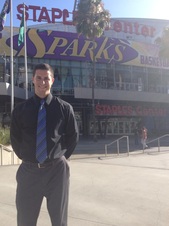 As this incredible experience in USC's sports residency is coming to a close in a little over one month from now, I've done much reflecting lately. One year ago I was graduating from PT school and today I am treating high school, college, and professional athletes. A lot has changed from a personal and professional perspective. Going into the sports residency I had many expectations and opinions on what I thought I would get out of it. What I envisioned was much different then what has truly transpired. The most important thing I have learned this year is to constantly assess, reflect, and expand on each and every patient case. Whats the pain generating structure? What is contributing to that? Whats the most important contributing structure? How did you verify one vs the other? What treatment intervention will you choose and is that the most appropriate/best intervention and why? How did you measure if there was a change? Are you reassessing every session? Are you making a change every session? If your patient is not progressing have you expended every possible reason why? These are the daily thoughts I am challenged to think about with every patient. The residency has flipped my thought process completely. School gave me a very basic foundation, but it couldn't give me the clinical reasoning development that a residency could. It's not just clinical reasoning though, its manual therapy skills as well. Is my body placement the MOST optimal? Am I being lazy and not using a belt to get the perfect stabilization? Am I using a wedge under the scapula for shoulder mobs? Am I measuring well? Is the manual therapy selection (assessment or intervention) the very best I can use right now for this patient? Why? What makes it the most appropriate? Lastly, I think what is often confused is the word "experience". Just because someone has years of experience does not mean that experience has been "good" experience. On the flip side, just because one goes though a residency and gains additional experiences doesn't mean they are better than someone five years out. I hear that all the time, a residency gets you five years of experience in one year. Well, thats not necessarily true. The intention is to advance your experience in a particular subspecialty faster and more focused than a non-resident, thats all. Every person will be different. Do I have more experience treating athletes that I would have in an outpatient orthopedic group? Yes, thats without a doubt. Training room at the high school, college, and professional level every week, clinic time with weekend warriors, high school, college and professional athletes, and observation/co-treating with mentors in the clinic, USC, and private practices has given me opportunities that I wouldn't have been able to replicate without the residency. The point is that whatever your experience is, make the most of it. If you feel like you're weak in one area go out and find a way to improve that area. There are manual therapy courses and fellowships, sports physical therapy conferences (TCC), residencies and fellowships, online blogs and webinars, and more. Follow the top PT's in the area you want to be in and pay attention to what they are following, conferences they are going too, and places they have worked. Take advantage of the situation you have and keep moving forward! - Brian 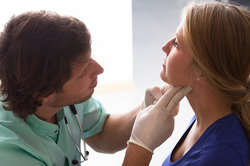 Last week, PT Think Tank put up a post about how clinic owners view residency grads and incorporate the added training into their job offers. This was an excellent topic to present as many do not consider potential employers' opinions when deciding on whether or not to pursue a residency. While the interest in residencies appears to be increasing from a new grad perspective, many employers continue to be unaware of the benefits of a residency or why one would actually consider pursuing one. What many do not realize is that we graduate physical therapy school as generalists. We know a little bit about many different areas, but are in no way experts in any specific area. That doesn't mean we graduate incompetent, but we definitely have an inexperienced aspect to our care. While many are aware that residencies contain many different components such as additional didactic/clinical work, mentoring hours, etc., they are unaware of the impact this plays on the "experience" of a PT. A residency allows one to gain specialized training in one specific area. This immediately separates the typical "new grad" from a "residency grad," or even a PT 1 year out of school. A residency basically allows you to accumulate the experience at a higher rate compared to just regular practice. This is possible because of the accelerated development of clinical reasoning. That is not to say that a residency is necessary. I know plenty of individuals who are driven sufficiently to become an expert clinician where that residency is not required...but it doesn't hurt. I was asked in an interview why the employer should hire me (1 year out of PT school and a residency graduate) instead of a clinician with 10 years experience. I simply explained just because a PT has been practicing for a decade, it doesn't mean they are any more competent than a new grad. We know plenty of 10-year PT's who still use ultrasound and hot packs regularly. Sometimes years of practice does not correlate with improved clinical skills rather more time to form improper habits. As a residency graduate, one must be careful of potential employers and their value of residency training. If an employer does not understand the value of having highly trained clinicians on staff, that says quite a few things about the philosophy of that work place. A clinic that is looking to hire any warm body has no interest in providing quality care. With skilled clinicians, patients will have improved outcomes, resulting in word of mouth referrals and desired care. My mentor is one of the few Fellows of Manual Therapy in the state and repeatedly has referrals specifically directed towards him. This is becoming increasingly important as health care is moving towards a quality/outcomes driven reimbursement model. Should a residency grad have increased pay? Absolutely. Most clinics pay based on experience, not skill. This is unfortunate as there are just as easily bad "experienced" clinicians that have been doing the same thing for 20 years as there are bad new grads. Experience does not guarantee quality. The way I approached this topic in interviews was I listed the average salary for PT's in my area. I then gave a number above that as I felt a residency program develops above-average PT's, justifying the above-average pay. Depending on the setting you are looking to practice, you will have a various amount of influence in this area. Some settings have so many qualified applicants that you may have little bargaining power. In other places, you will have a big say due to your added training. In summary, you are going to hear a variety of opinions in regards to the value of residency training from clinic owners. Answers may vary from seeing residency training as a deficit to only hiring residency graduates. An employers view on residency training says a lot about what they think about continuing education and providing quality care. While you may be an "above average" clinician following residency graduation, that does not guarantee increased pay (due to supply and demand), so I would not pursue a residency for the financial reasons. However, if you are interested in growing as a clinician, a residency, fellowship, or some other advanced training program may be for you. Currently I am completing the upper quarter module at the Harris Health System orthopedic residency. After covering the shoulder and elbow, we spend the final 2-3 weeks reviewing wrist and hand conditions and management. This section of the module is taught by certified hand therapists and occupational therapists because they see the majority of distal upper extremity injuries at my clinic. During last Monday mornings lab we covered splint making. In this post I will cover the various splints we made with indications of when to utilize each splint. One key piece of information regarding splinting: splint as little as possible to maximize ROM at surrounding joints. Generally, only splint one joint proximal and one joint distal.
Splint making is not difficult, but like any other skill it does take practice. When making splints, focus on the diagnosis at hand and the specific impairments of the patient. As stated early, limit as little movement as possible. Hand-land can seem like a scary place at times, but with a little practice and anatomical review, you will find that treatment is similar to many other joints of the body.
-Jim 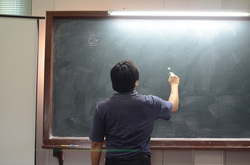 When selecting which residencies you want to apply to, a component some choose to consider is teaching. While I was interested in possibly teaching, I can't say it was necessarily one of my top criteria for deciding which ones to apply to. I had a preconceived idea that any teaching a resident would be doing would include the type of classes taught in the 1st year of PT school. That didn't exactly make me want to switch to the academic side of PT, especially with the thought of making lesson plans and grading paper. Upon accepting the residency position at Scottsdale Healthcare, I was completely unaware of the two teaching opportunities I have had thus far. A couple months ago, I was the clinical instructor for a student on her final rotation before graduation. This was a form of teaching I thoroughly enjoyed in that it was highly clinical-based. Going back to PT school, I never thought I would want to become a CI due to my distaste for completing the CPI. As many have said before, teaching an enthusiastic student can be incredibly rewarding. Being able to see the transition of a student to a highly competent physical therapist is pretty mind-blowing. We all know that we can learn from a student when they ask questions that challenge us, but we also learn by reinforcing what we already know when we teach them, as it further embeds the information into our minds. While it may seem unusual for a 1st year PT to be having a student (I had previously thought that new grads were not allowed to have students), the residency makes up for it in 2 ways. First, as residents we had developed a clinical reasoning and skill-set that were beyond most new grads, allowing us to further the skills of the students. Secondly, many of our mentoring hours changed format to mentoring for how to be a CI. As I said earlier, this teaching opportunity further enhanced my understanding of the residency material as well. The second opportunity for teaching was a recent cervical course that my mentor hosted in AZ. The other resident and I were TA's for the course, where we helped out in lab with teaching the various examination and treatment techniques. It was really interesting to watch these PT's learn and develop their skills as it was in a way a look back at how the other resident and I felt at the beginning of the residency. Another component of the course was that I was able to contribute to a current literature review regarding manual therapy in the cervical spine. I bring both of these teaching methods up because my initial impression of how one could teach in a residency was to give a case study or teach to 1st or 2nd year PT students. Both of the methods I was exposed to were more clinical-based in my opinion and thus more interesting to me. I hope that some reading this will perhaps be more open to contributing to the development of PT as a profession by teaching in any method. I was resistant towards it originally, but I found a path that was much more appealing to me and hopefully you will as well! -Chris |
Copyright © The Student Physical Therapist LLC 2023

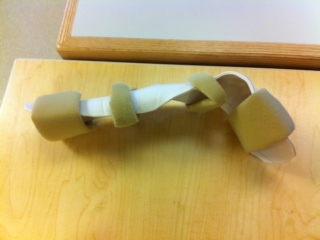
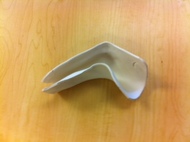
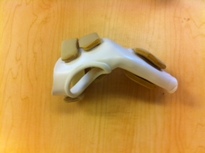
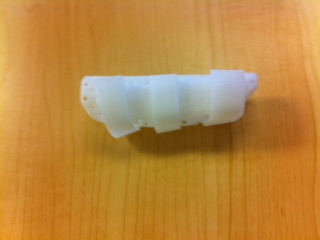
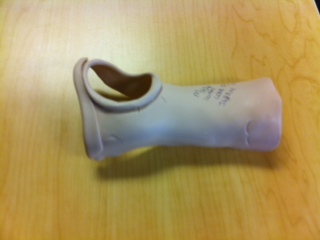
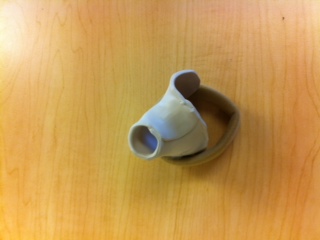
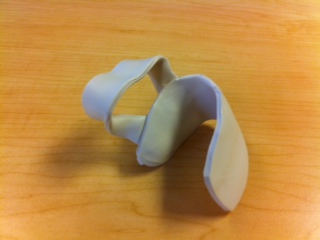
 RSS Feed
RSS Feed